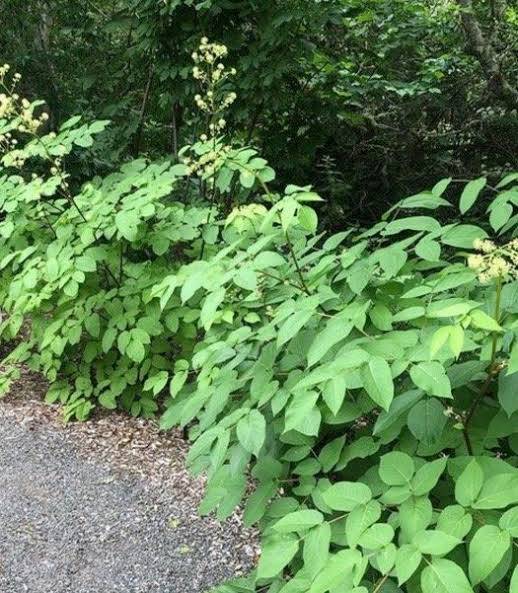1. Native Habitat: California Spikenard is native to the coastal and mountainous regions of California and Oregon, thriving in shaded, moist environments like forest edges and riverbanks.
2. Large Size: It is one of the largest herbaceous plants in North America, capable of reaching heights of up to 3 meters (10 feet)..
3. Seasonal Foliage: The plant is stress-deciduous, meaning it loses its leaves during dry or stressful conditions but regrows them when conditions improve.
4. Medicinal History: Indigenous tribes, including the Karok and Pomo, used the plant extensively for medicinal purposes, such as treating arthritis, respiratory issues, and digestive problems
5. Multiple Names: Besides California Spikenard, it is also known as Western Aralia, Elk Clover, and California Ginseng.
6. Impressive Flowering: The plant produces clusters of greenish-white flowers that are sticky and mature into dark purple berries in the fall.
7. Antioxidant Properties: The plant contains antioxidants that help in reducing oxidative stress and inflammation..
8. Root Uses: The roots are highly valued in herbal medicine for their anti-inflammatory, antifungal, and immune-boosting properties.
9. Edible Shoots: Young shoots of California Spikenard are sometimes used in traditional recipes, although this is less common compared to its medicinal uses.
10. Natural Pest Control: The plant can be used in gardens to deter insects, providing a natural form of pest control.
11. Hardy Plant: It is hardy in USDA zones 9 to 10 and can tolerate a variety of soil types, making it a robust addition to gardens.
12. Ornamental Value: Besides its medicinal uses, it is appreciated for its ornamental value, adding a lush, woodland aesthetic to shaded garden areas.
13. Cultural Significance: The plant's various parts, including its leaves and berries, have been traditionally used by Native American tribes not only for medicine but also in cultural rituals and practices.



